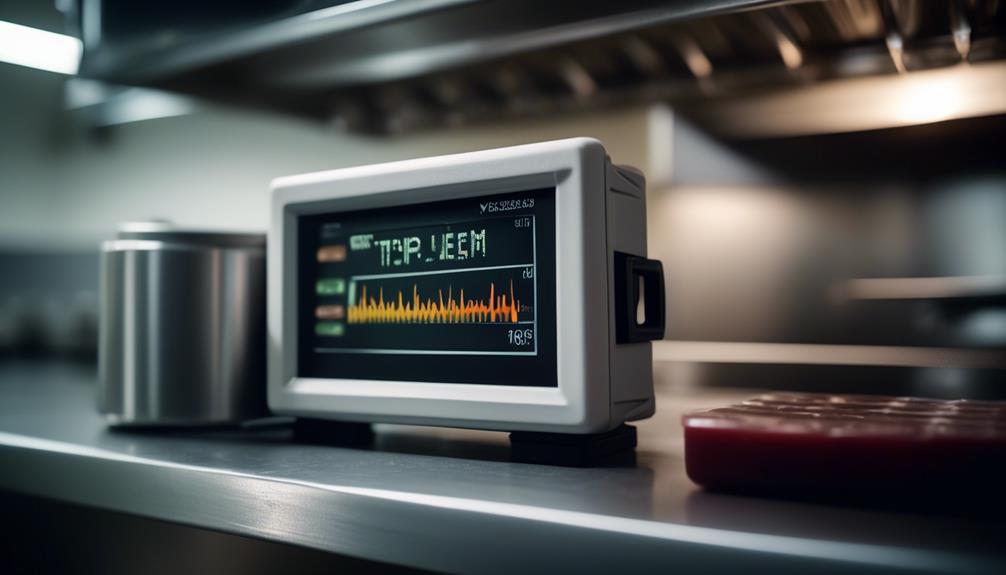Feeling confident about managing your cold chain? Think again. Thawing challenges can wreak havoc on your products if not handled effectively.
In this article, you’ll discover strategies to combat temperature excursions, optimize storage, tackle transportation hurdles, and ensure regulatory compliance.
Get ready to thaw out the best practices for successful cold chain management.
Understanding Cold Chain Logistics
In the cold chain logistics process, you must carefully manage the temperature conditions of products from production to consumption to maintain their quality and safety. Temperature control is crucial at every stage of the supply chain to prevent spoilage, contamination, or deterioration of goods.
From the initial storage in manufacturing facilities to transportation, warehousing, and retail, maintaining the right temperature is essential. Any deviation can compromise the integrity of the products. In the supply chain, it’s imperative to monitor and regulate temperatures effectively to ensure that products remain within the specified range.
Failure to do so can lead to significant financial losses and pose potential health risks to consumers. Therefore, understanding and implementing precise temperature control measures throughout the supply chain is paramount for successful cold chain logistics management.
Impact of Temperature Excursions
Maintain strict temperature control throughout the cold chain logistics process to prevent temperature excursions, which can compromise product integrity and lead to financial losses and potential health risks.
Temperature fluctuations pose serious risks to the integrity of products within the supply chain. Implement robust temperature monitoring systems to detect and address any deviations promptly.
Temperature excursions can compromise the quality and safety of pharmaceuticals, vaccines, and perishable goods, leading to significant financial repercussions and potential health hazards for consumers. It’s essential to proactively manage temperature variations to ensure product integrity and safety.
Best Practices for Storage
To ensure optimal product integrity and safety in the cold chain logistics process, you must implement best practices for storage, maintaining strict temperature control and vigilantly monitoring for deviations to prevent any compromise to the quality and safety of pharmaceuticals, vaccines, or perishable goods.
Temperature control is paramount in storage facilities to uphold the efficacy of sensitive products. Utilize advanced refrigeration systems and temperature monitoring devices to uphold the required storage conditions.
Implementing robust inventory management practices is essential for efficient storage. Regularly audit inventory levels, conduct thorough checks for expiration dates, and ensure proper rotation of stock to prevent any product from being held past its shelf life.
Transportation Challenges
Implement strict temperature control measures in your transportation processes to mitigate the challenges of maintaining product integrity and safety within the cold chain. Temperature control is crucial during transportation to prevent product spoilage or compromise.
Monitor and regulate the temperature inside the transport vehicles consistently to ensure that the products remain within the specified temperature range. Invest in reliable refrigerated transportation options to uphold the integrity of the cold chain. Regularly calibrate temperature monitoring devices to guarantee accuracy.
Train transportation staff on the importance of maintaining proper temperature conditions throughout the supply chain. Utilize insulated packaging and containers to minimize temperature fluctuations during transit. Implement contingency plans to address unexpected temperature deviations during transportation.
Monitoring and Tracking Solutions
Regularly monitor and track the temperature and location of your products throughout the cold chain using advanced tracking solutions. Utilize wireless sensors and real-time visibility to ensure the integrity of your products at every stage of the cold chain.
Here are five key benefits of implementing advanced tracking solutions:
- Enhanced product safety: Wireless sensors provide continuous monitoring, ensuring that products remain within the required temperature range.
- Improved efficiency: Real-time visibility allows for proactive decision-making, reducing the risk of temperature excursions and potential product loss.
- Regulatory compliance: Advanced tracking solutions provide detailed temperature records, aiding in compliance with cold chain regulations.
- Quality control: Monitoring and tracking solutions enable you to identify and address any potential issues in the cold chain promptly.
- Customer satisfaction: With real-time visibility, you can provide customers with accurate information about the status of their products, enhancing trust and satisfaction.
Regulatory Compliance Considerations
Ensure compliance with cold chain regulations by maintaining detailed temperature records throughout the transportation and storage of your products.
Compliance guidelines and regulatory requirements are essential aspects of cold chain management. It’s crucial to stay updated with the latest regulatory standards and ensure that your cold chain operations align with these guidelines.
Regularly review and audit your cold chain processes to guarantee compliance with industry regulations. Additionally, consider implementing temperature monitoring systems and utilizing validated packaging solutions to meet regulatory requirements.
Adhering to compliance guidelines not only ensures the safety and efficacy of your products but also helps in building trust with customers and regulatory authorities.
Stay proactive in understanding and implementing the necessary regulatory measures to maintain a robust and compliant cold chain operation.
Risk Mitigation Strategies
To minimize risks in your cold chain management, prioritize proactive monitoring and swift response actions. Implementing effective risk mitigation techniques is crucial for maintaining temperature control and ensuring the integrity of your products. Here are some strategies to help you mitigate risks in your cold chain management:
- Regularly conduct temperature monitoring and logging at critical points in the cold chain.
- Utilize advanced temperature control technology and equipment to maintain precise conditions.
- Develop and implement contingency plans for potential disruptions in the cold chain.
- Train and educate personnel on best practices for handling and managing temperature-sensitive products.
- Establish clear communication channels and protocols for addressing any deviations from optimal temperature conditions.
Conclusion
As you navigate the complexities of cold chain management, remember that both challenges and solutions exist simultaneously.
By understanding the impact of temperature excursions and implementing best practices for storage and transportation, you can effectively mitigate risk and ensure regulatory compliance.
Utilize monitoring and tracking solutions to stay ahead of potential issues and continuously improve your cold chain logistics.
Embrace the dual nature of the cold chain – both challenging and manageable – to succeed in this critical aspect of logistics.



